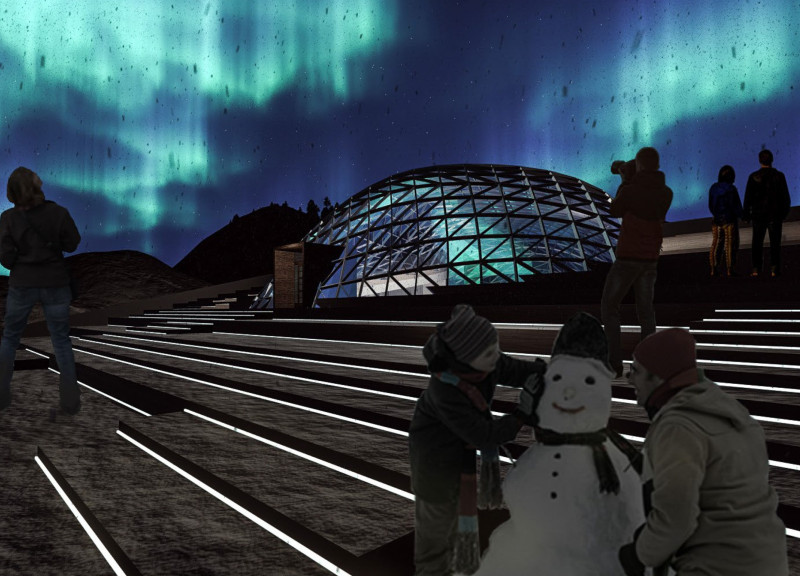5 key facts about this project
The restaurant situated near Hverfjall Volcano and Myvatn Nature Baths in northern Iceland connects the interior dining experience with the surrounding natural landscape. It provides visitors with a space to enjoy their meals while being aware of the ecological context. The overall design aims to create an immersive environment, allowing diners to appreciate both the food and the beauty of nature.
Design Concept
The design features a layered entrance that divides access into two levels. The lower level leads to a garden dining area, inviting guests to enjoy their meals in a vibrant setting. The upper level directs visitors into the main dining room. This thoughtful arrangement enhances the experience, providing different spatial interactions as guests move through the space.
Garden Integration
One key aspect is the greenhouse garden that integrates with the dining area. Diners can see how the vegetables served on their plates are grown. This connection encourages visitors to engage in the food production process. Families and children in particular can learn about sustainability and gardening, making it a valuable educational experience.
User Accessibility
Parking is designed to provide easy access while keeping the dining space separate. Visitors can park conveniently without disrupting the flow of the restaurant. As they approach the building, they take in the views of the natural surroundings, helping to build anticipation for the meal ahead.
Materiality and Light
The design includes materials such as precast concrete panels, glass panels with steel frames, and wood flooring. These choices provide durability and allow natural light to fill the space. The use of glass enhances the connection between the inside and the outside, ensuring guests remain aware of the evolving landscape during their visit.
The dining area, located above the greenhouse, offers an opportunity to observe the planting activities below. This unique positioning fosters a greater connection between diners and the source of their food, enhancing the overall experience of the restaurant.






















































